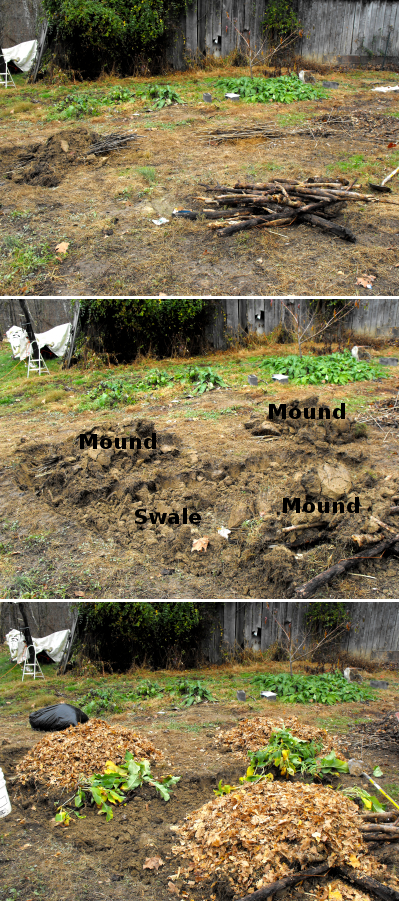
Mounds and bogs in the forest garden
 Robert
Hart created mounds in his garden just like the
mounds I built for my
hazel trees.
He layered branches and leaves on the ground, then
topped them with turf (grass-side down), compost, and soil. He
considered the mounds a method of increasing his gardening space, with
the improved drainage being secondary. According to Hart,
mound-gardening originated in China and was also very popular in
Germany, where it was known as Hugelkulturin.
Robert
Hart created mounds in his garden just like the
mounds I built for my
hazel trees.
He layered branches and leaves on the ground, then
topped them with turf (grass-side down), compost, and soil. He
considered the mounds a method of increasing his gardening space, with
the improved drainage being secondary. According to Hart,
mound-gardening originated in China and was also very popular in
Germany, where it was known as Hugelkulturin.
Hart also created little
bog gardens, laying down a sheet of plastic
and topping it with peat. The bog gardens allowed him to extend
his repertoire to include cranberries and other bog plants. In
fact, varied habitats could be considered one of the themes of his
overall garden, which contained the forest garden, bog garden, annual
vegetable
garden, and even a little pond. Intuitively, Hart had latched
onto an idea that every ecologist understands --- areas with multiple
habitats can support more species than less diverse areas.
| This post is part of our Robert Hart's Forest Gardening lunchtime
series.
Read all of the entries: |
Want more in-depth information? Browse through our books.
Or explore more posts by date or by subject.
About us: Anna Hess and Mark Hamilton spent over a decade living self-sufficiently in the mountains of Virginia before moving north to start over from scratch in the foothills of Ohio. They've experimented with permaculture, no-till gardening, trailersteading, home-based microbusinesses and much more, writing about their adventures in both blogs and books.
Want to be notified when new comments are posted on this page? Click on the RSS button after you add a comment to subscribe to the comment feed, or simply check the box beside "email replies to me" while writing your comment.
